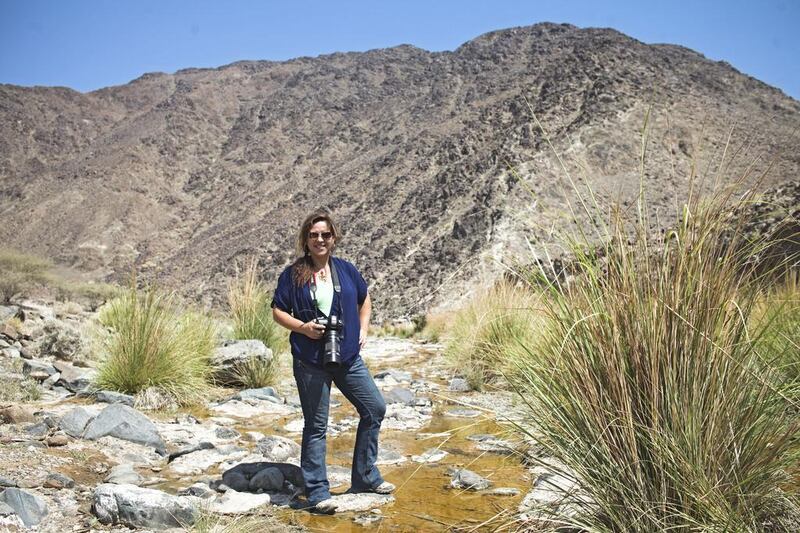RAS AL KHAIMAH // After more than six years of repeated visits to one of her favourite beauty spots, Priscilla van Andel was quick to notice the changes.
On a visit last October, to her dismay she found excavation work had been taking place in the nameless wadi, which sits just off Showka in the Hajar Mountains, in an enclave belonging to Ras Al Khaimah.
“It was just a narrow road and after that, it was just natural,” said Ms van Andel, a wildlife photographer from the Netherlands.
With running water still available as late as mid-May, the changes may not be evident to a first-time visitor to the wadi, with the greenery of ghaf trees, palms and blooming oleanders being more conspicuous.
Ms van Andel said soil on both banks of the wadi appeared to have been dug up, with the roots of nearby trees sticking out, as if layers of soil had been removed, so as to widen the wadi. On parts of the banks that were rocky, there were signs of disturbance too with markings on the rock resembling those left by excavation equipment. In several areas, rocks bore markings in red or yellow colour, while at one spot the wadi floor appeared to have been hollowed out.
“In the first place, I thought scientists had done it to see what the water level was like,” said Ms van Andel.
She could not specify what caused the disruptions was as she had never witnessed heavy machinery in the wadi. But an Emirati resident of the area, who identified himself as Ahmed, said he blamed a nearby quarry company for the destruction.
While the area is famous for its natural beauty, it is also sits within an area where quarrying companies operate.
Pictures of the disturbance at the wadi were sent to the Environment Protection and Development Authority in Ras Al Khaimah.
Dr Saif Al Ghais, Executive Director of the authority, said it was unlikely that any quarrying company was responsible for the excavation.
“It looks like someone was taking material for landfilling, for a house or something,” he said, explaining that crushing companies usually specialise in extracting limestone or gabbro rock, rather than gravel or sand.
Dr Al Ghais said the authority had not been in touch with any company about the matter but added he would investigate whether the wadi contains rare animals or plants that merit special protection measures.
This is precisely what Ms van Andel would like to see. While the wadi is not part of a protected area, it deserves more attention as one of few examples of fresh water mountain ecosystems, she said.
The stretch of several hundred metres is flanked by palm trees including the dwarf palm, Nannorrhops ritchieana, one of two species of native palm found in the UAE. As the wadi goes deeper into the mountain, the terrain dries with acacia trees and smaller shrubs dominating the landscape.
Ms van Andel has photographed a variety of fauna in the wadi, such as the striking, blue-coloured Sinai agama lizard. She is, however, yet to spot an endangered species — one reason for areas to be declared protected.
“This is one of the last wadis you can find like this in the UAE,” she said.
“It is so green. Most of the year, there is water,” she said. “Everywhere there is water, we should protect. There is so little fresh water in this country.





